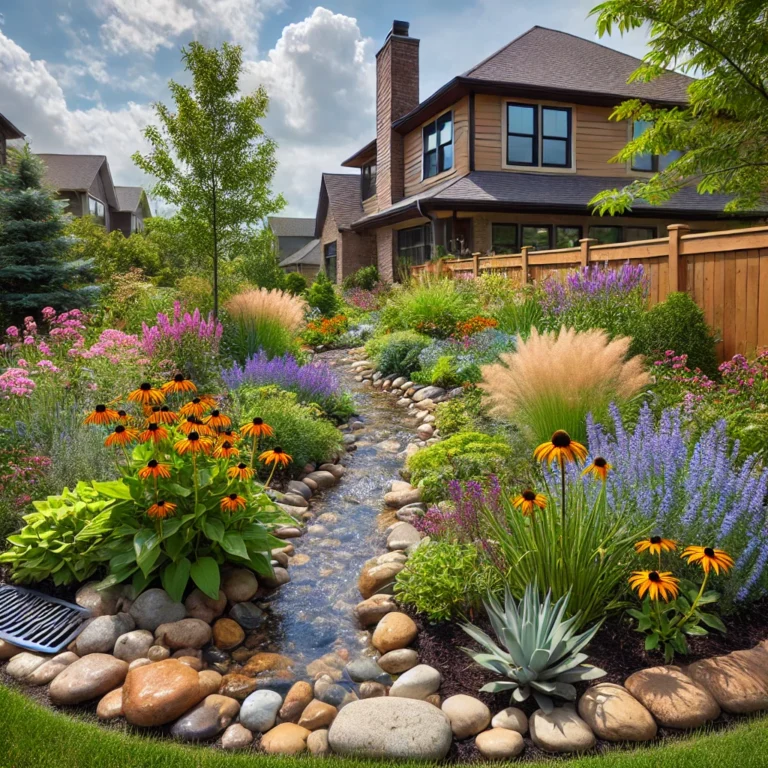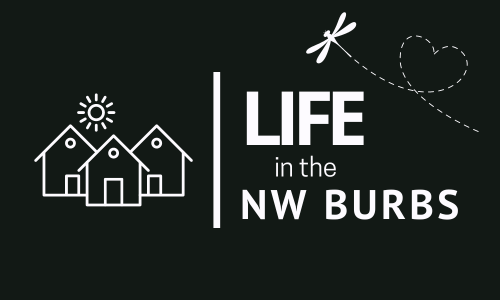Creating a rain garden at home is a fantastic way to contribute to sustainable living, especially in the NW Chicago suburbs. It’s an eco-friendly project that not only beautifies your yard but also helps manage stormwater, supports local wildlife, and can save you money on water bills. This guide will walk you through everything you need to know to build your rain garden, making it a fun and rewarding project for you and your family.

What is a Rain Garden?
A rain garden is a specially designed garden that collects and absorbs runoff from roofs, driveways, and other impervious surfaces. Think of it as a natural sponge, soaking up excess rainwater and filtering it through layers of soil and plant roots.
Benefits of Rain Gardens
Why should you consider building a rain garden? Here are a few compelling reasons:
- Water Management: Rain gardens help reduce flooding by capturing stormwater.
- Environmental Impact: They filter pollutants from runoff, improving water quality.
- Biodiversity: They provide habitat for local wildlife, including birds, butterflies, and beneficial insects.
- Aesthetic Appeal: Rain gardens can be beautiful additions to your landscape.
Planning Your Rain Garden
Planning is crucial for a successful rain garden. Here’s how to get started:
- Assess Your Yard: Identify where water tends to collect or flow.
- Determine the Garden Size: The size will depend on the amount of runoff you want to manage.
- Select Plants: Choose native plants that thrive in your local climate and soil conditions.
Choosing the Right Location
Location, location, location! The first step is to choose the right spot for your rain garden. Here are some tips:
- Close to Runoff Sources: Place it near downspouts, driveways, or other areas where water collects.
- Away from Foundations: Ensure it’s at least 10 feet away from your home’s foundation to prevent water damage.
- Sunny or Partially Shaded Area: Most rain garden plants prefer these conditions.
Sizing Your Rain Garden
How big should your rain garden be? A general rule of thumb is that the garden should be about 20-30% of the area that will drain into it. For example, if your roof is 1,000 square feet, your rain garden should be about 200-300 square feet.
Selecting Plants for Your Rain Garden
Choosing the right plants is essential for a thriving rain garden. What plants work best? Here are some recommendations:
- Native Plants: These are well-adapted to the local climate and require less maintenance.
- Water-Tolerant Plants: Look for plants that can handle both wet and dry conditions.
- Pollinator-Friendly Plants: Attract bees, butterflies, and other beneficial insects.
Some great options for the NW Chicago suburbs include:
- Swamp Milkweed
- Purple Coneflower
- Blue Flag Iris
- Black-Eyed Susan
Preparing the Site
Preparing the site properly will set your rain garden up for success. Here’s what you need to do:
- Mark the Area: Use a hose or string to outline the shape of your rain garden.
- Remove Sod: Clear the area of grass and other vegetation.
- Digging: Excavate the area to a depth of about 6-12 inches.
- Amend the Soil: Mix in compost to improve soil structure and fertility.
Planting Your Rain Garden
Now it’s time to get your hands dirty! Planting your rain garden involves:
- Arranging Plants: Place plants in the garden according to your design plan.
- Digging Holes: Dig a hole for each plant, about twice as wide as the root ball.
- Planting: Place each plant in its hole, backfill with soil, and water thoroughly.
Mulching and Watering
Mulching and watering are key to helping your rain garden thrive.
- Mulch: Apply a 2-3 inch layer of mulch to help retain moisture and suppress weeds.
- Watering: Water your rain garden regularly until plants are established, typically for the first year.
Maintaining Your Rain Garden
Ongoing maintenance ensures your rain garden stays healthy. Here’s what to do:
- Weeding: Regularly remove weeds to reduce competition for resources.
- Pruning: Trim plants as needed to maintain their shape and health.
- Watering: During dry spells, provide supplemental water.
Troubleshooting Common Issues
Encountering problems? Here are some common issues and solutions:
- Standing Water: If water isn’t draining, improve soil composition or adjust the garden’s depth.
- Poor Plant Growth: Check for nutrient deficiencies or pests.
- Erosion: Add more mulch or adjust the slope to reduce runoff speed.
Rain Garden Success Stories
Want some inspiration? Here are a few success stories from the NW Chicago suburbs:
- The Smith Family: Transformed their soggy backyard into a beautiful rain garden, attracting butterflies and reducing basement flooding.
- Green Elementary School: Created an educational rain garden project, teaching students about sustainable living and local ecology.
- Community Park: A local park installed a rain garden to manage stormwater and create a serene spot for visitors.
Conclusion
Building a rain garden at home in the NW Chicago suburbs is a wonderful way to embrace sustainable living. It’s a project that brings beauty to your yard, supports local wildlife, and helps manage stormwater effectively. With careful planning and a bit of effort, you can create a rain garden that’s both functional and beautiful.
FAQs
1. What is a rain garden? A rain garden is a landscaped area designed to capture and absorb runoff from rain, reducing flooding and improving water quality.
2. How do I choose the right plants for my rain garden? Select native plants that are adapted to your local climate and soil. Look for water-tolerant species that can handle both wet and dry conditions.
3. How often should I water my rain garden? Water your rain garden regularly for the first year to help plants establish. After that, water during dry spells as needed.
4. Can a rain garden help reduce my water bills? Yes, rain gardens can reduce the need for supplemental watering by capturing and using rainwater, potentially lowering your water bills.
5. What are the main benefits of a rain garden? Rain gardens help manage stormwater, improve water quality, support local wildlife, and add aesthetic appeal to your landscape.

